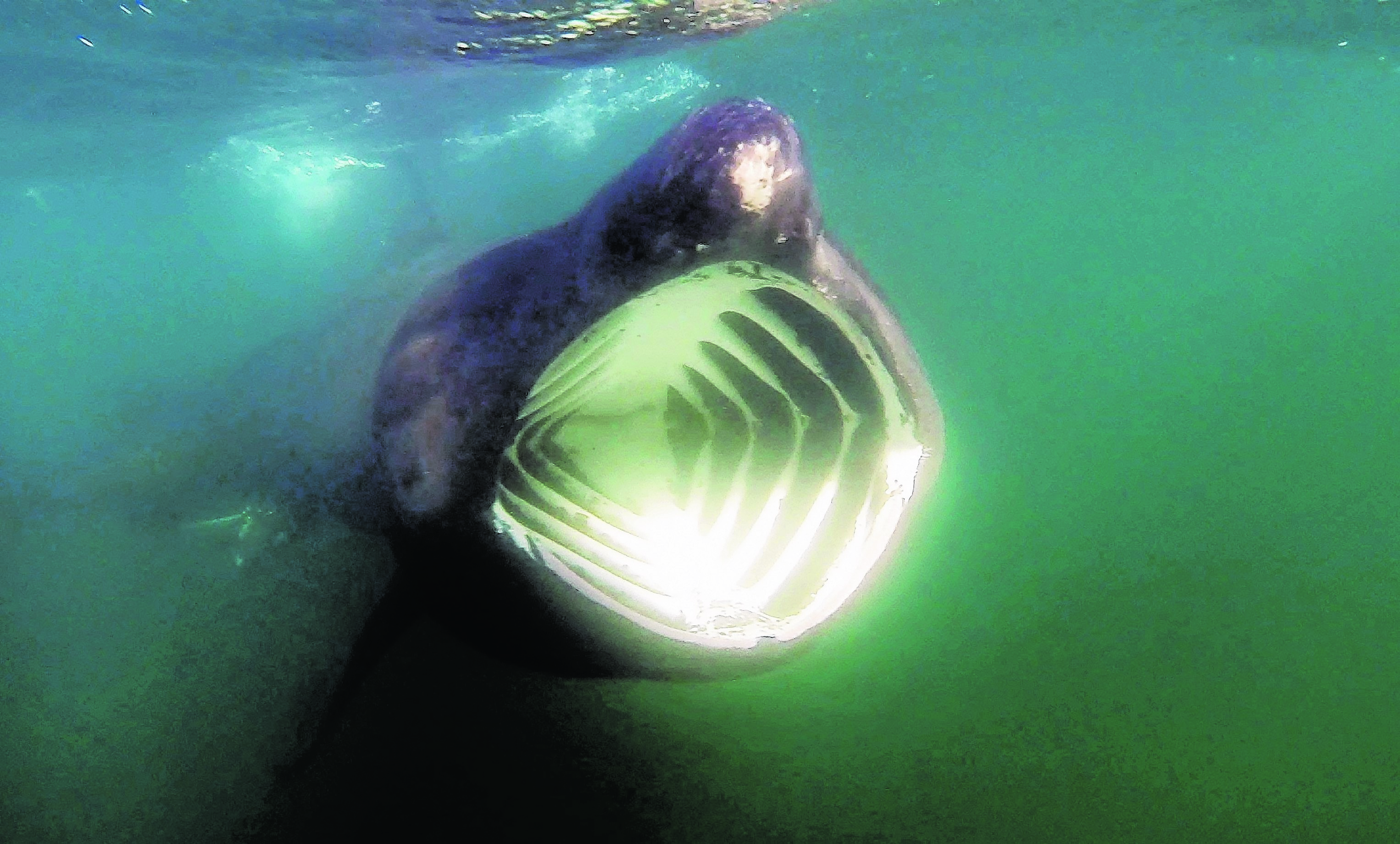It’s not just tourists who love flocking to the Hebrides each summer – the islands are also a popular haunt with basking sharks. Figures released by Basking Shark Scotland, an Oban-based company, reveal that last year was an interesting one for basking sharks in Scottish waters, with many places round the UK recording their worst sightings numbers in many years.
However, with 250 individual sharks being recorded on its database, the Hebrides still tops the best place in the world for basking sharks.
Owner Shane Wasick said: “The 250 shark sightings are a mixture of public submissions and our own discoveries. These sightings ranged from Caithness to Dumfries and Galloway, but the highest concentration of sightings was recorded in the Hebrides. The largest number spotted in one shoal on one day was over 30 individuals and occurred during a large summer plankton bloom. Although our public sightings submissions had dropped by a third in 2014, our own sightings have increased by 23% from the previous year (2013).
“Although 2014 wasn’t a classic year for shark sightings, it just goes to show we still have a world-class wildlife event in our own waters. We would encourage the public to get involved with spotting the sharks as the more people that can record them from different areas, the better the data is for the scientists studying their movements.”
During summer expeditions, marine biologist staff with the firm collect a large amount of data on the sharks, which include what sex they are, individual numbers, length, location, bodily features for future identification and any specific behaviour such as breaching. The sharks are the largest in the world to breach clean of the surface and theories as to why they do this include being either a mating display or to remove the parasites which attach to their bodies.
Following a report by the firm in 2013, a shark which had been fouled by marine debris and given the name Sore Nose, was discovered. This shark was found again last year, and this time the debris was missing and injury caused by the debris had healed.
“Although great news for the shark’s wellbeing, the shark was seen five miles and 10 days from where we last saw him. This can assist in supporting the idea that the sharks are using the same areas every year and ensure that adequate measures are in place to ensure their protection when visiting our waters,” said Shane.
Basking Shark Scotland uses tourism to assist with conducting citizen science on the basking shark population. They work alongside university researchers and provide data to them along with their public submissions. Basking Shark Scotland encourages the public to submit their own sightings, which endeavours to try and cover as large an area and data set as possible. To report a sighting go to
http://baskingsharkscotland.co.uk/scottish-basking-shark-sightings/
Those who want to get a closer look at the sharks can book individual or group trips during shark season which is generally between May and September, with July and August being the best months to spot these magnificent creatures. Organised trips range from single day to week-long tours.
Contact: Basking Shark Scotland on 07975-723140 or www.baskingshark scotland.co.uk
